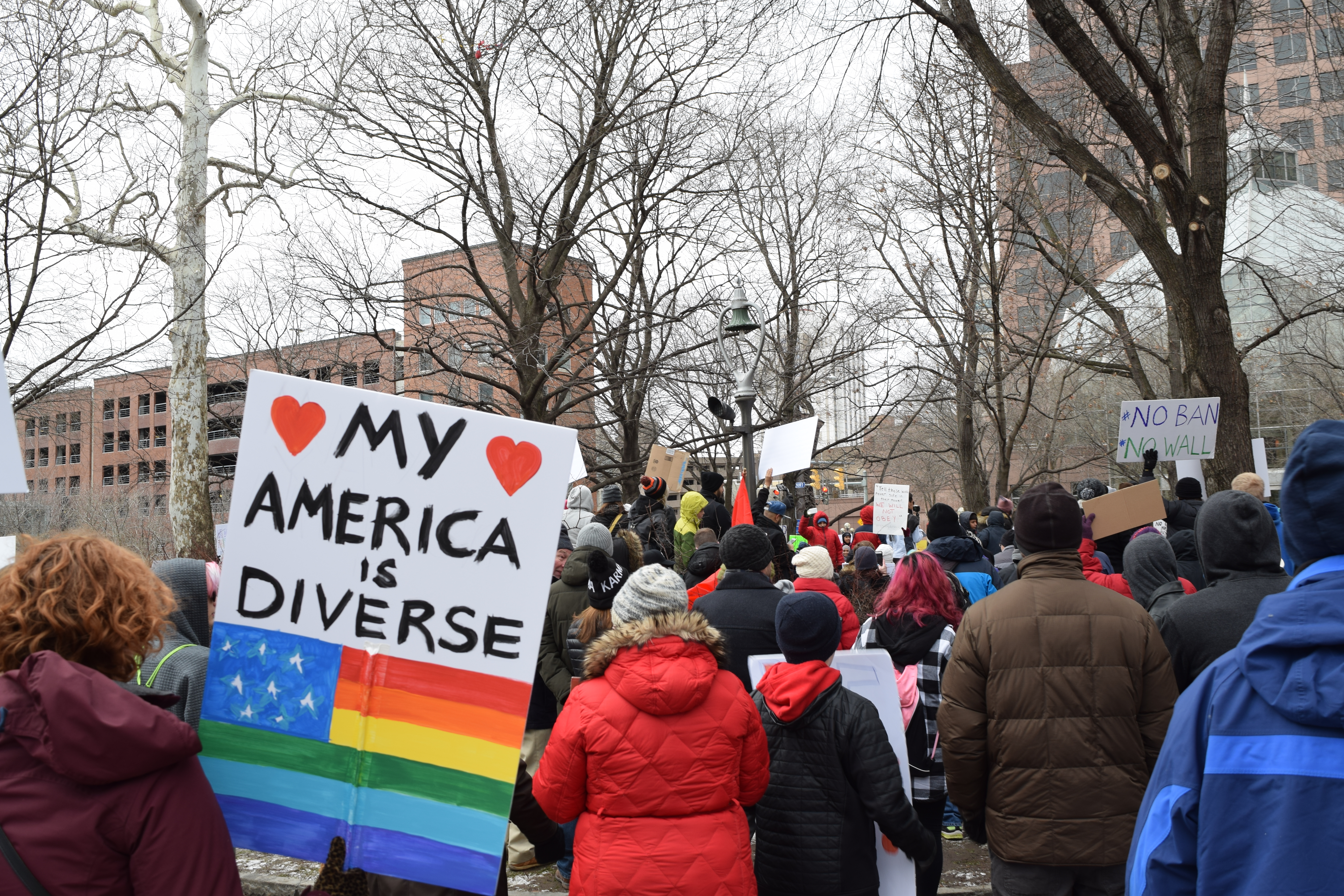
January 29, 2017 protests against President Donald Trump.
Image taken by flickr user rchappo2002
By Tamara Smiley Hamilton and Olivia Barrett
Students of the new Conflict 600 Foundations course of Conflict Analysis and Resolution demonstrated the application of theory and practice with the Dialogue and Difference class project in April 2017. Working in large and small teams under the guidance of Rich Rubenstein, and two guest presenters - Lacy MacAuley and noted journalist Milton Viorst - students worked to execute a creative exchange of ideas on protest in the age of Trump.
Lacy MacAuley, representing DISRUPTJ20, a self-proclaimed anarchist group, talked about the importance of protest. Her group, believing in an absence of hierarchy, organized the two days of protest during the inauguration of the 45th President of the United States, Donald Trump. Milton Viorst provided a historical context to protest and also mentioned that it was a window through which to gauge current protests. Referencing the Enlightenment, both World Wars, and the Arab Spring that turned winter, Viorst shared fascinating insights into how protests start and their impact on society.
The intent of the dialogue was to explore ideas and to generate questions. Some of these questions included: What are some alternative ways of protesting given the militarization of police forces? How effective might economic protest be e.g. refusing to buy a certain brand or groups of people deciding not to be consumers for three days? What would the impact be and would there be unintended consequences to small merchants in communities? Does protesting resolve any conflicts?
The dialogue was also intended to lift conflict theory off the pages of textbooks and articles and to breathe life into it through a current and critical reality: protesting in the age of Trump. A key takeaway was that social change takes time. For effective resource mobilization, organization is critical (example: The Women’s Inauguration Protest—pink hats and all)! In addition, we also learned that for those wanting to engage in protests given the danger of the environment we are in, social media is an avenue for information, particularly Facebook groups that keep tabs of upcoming protests, times, and locations.
At the close of the dialogue, Rich Rubenstein offered that one role for S-CAR students is to help people figure out what they want when they protest, rather than what the group should do. Focusing on what a group does he mentioned, could quickly lead to the dissipation of energy and momentum that the protest may have already generated.
